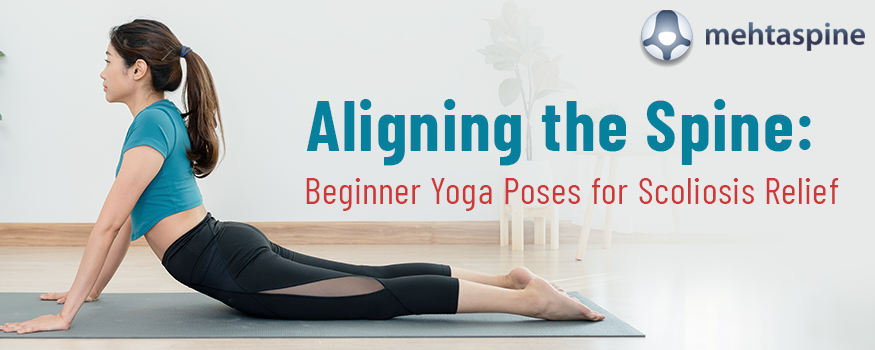Scoliosis Relief: Aligning Spine with Beginner Yoga
Many people with scoliosis, a medical condition characterized by an unnatural curvature of the spine, might find treatment via yoga’s alignment of the spine. Including basic yoga postures in your practice can help reduce pain, increase flexibility, and support the health of your spine.
These mild postures focus on particular regions of the spine, encouraging improved alignment and easing stress. People with scoliosis may improve their general well-being and get relief from symptoms by doing yoga regularly along with consulting an orthopedic spine surgeon. We will look at a range of basic yoga positions in this course that can assist people with scoliosis to feel relieved.
● Child’s Pose
The child’s posture is a mild yoga posture that is said to help with spinal alignment, ease stress in the back, and encourage relaxation. It is especially helpful for those who have scoliosis since it relaxes the body and mind while stretching the thighs, hips, and spine.
Start by kneeling on the mat with your big toes touching behind you and your knees slightly apart to enter the Child’s Pose. With your head resting on the mat, steadily lean your torso forward while sitting back on your heels. Depending on what seems more comfortable, extend your arms in front of you or beside your body. As you ease your entire body into the posture, let your chest rest on your thighs.
● Bridge Pose
Yoga’s Bridge Pose aims to align the spine, open up the chest, and strengthen the back muscles. It is advantageous for those with scoliosis because it eases back stress and increases spinal flexibility.
Lay on your back with your knees bent and your feet flat on the floor, hip-width apart, to do a Bridge Pose. With your hands facing down, keep your arms relaxed at your sides. Using your glutes and core muscles, press onto your feet and raise your hips off the surface. To open up your chest, roll your shoulders back and interlace your fingers beneath your hips. Remain in this position for a few breaths, keeping your head and neck loose on the mat.
● Seated Forward Bend
The seated forward bend is said to be a soothing yoga posture that relieves tension and induces relaxation by stretching the lower back, hamstrings, and spine. For those who have scoliosis, it can be effective since it lengthens the spine and relieves back stress.
Sit on the mat with your feet flexed and your legs stretched in front of you. As you inhale, lengthen your spine and contract your core muscles. As you release the breath, bend forward at the hips and extend your hands to your toes. As you bend forward, maintain a straight spine and do not curve your back.
Including basic yoga postures in your practice may assist people with scoliosis by reducing discomfort and improving spinal alignment. However, for thorough care, it is essential to speak with an orthopedic spine surgeon like Mr. Jwalant S. Mehta.
By visiting Mr Mehta spine surgeon patients may get specialised care that is suited to their needs, ensuring optimal recovery and long-term spinal health, due to his skill in treating all spinal disorders, correcting spine deformities, and contributing extensively to research.


